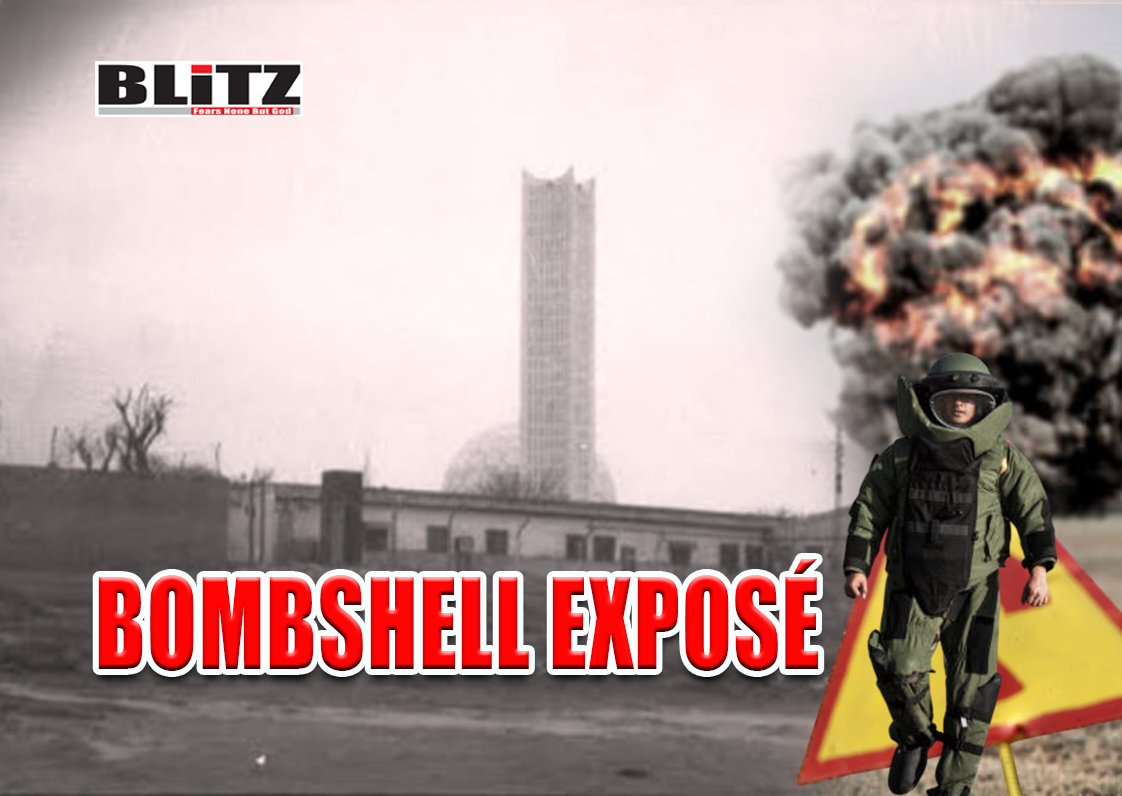Following publication of a post on verified ‘X’ account of Salah Uddin Shoaib Choudhury, Editor, Blitz, people have started asking – has Pakistan suffered a nuclear accident? There is no official confirmation or denial of this but the developments point towards a potentially disturbing situation in Pakistan.
After several people reported about the possibility of such an incident on social platforms, any posts or articles referring to “radiation” or “leak” are allegedly being taken down by Pakistani authorities and the local journalists have been reportedly denied access to its nuclear sites. Activists are raising alarms about online censorship.
In India, Air Marshal AK Bharti’s comment to a journalist during briefing on Operation Sindoor while responding to his question – “Thank you for telling us Kirana Hills houses nuclear installations” and then a clear on record statement that Indian Airforce did not hit Kirana Hills indicate the strategic messaging at play and the sensitive nature of this issue.
Adding to the complexity is the fact that several analysts have reported that military aircraft from both the United States and Egypt have reportedly landed at undisclosed airfields within Pakistan.
Sources suggest these landings may be linked to a covert operation aimed at securing or containing Pakistan’s nuclear arsenal, fueled by growing anxieties over internal instability and potential radiological contamination.
Signs point to radiological event
Some Medical professionals and residents within the suspected impact zones have noted an unusual pattern of illnesses that don’t align with typical seasonal ailments, said sources.
The reported symptoms – including persistent high fevers, skin lesions and rashes, chronic respiratory problems, and neurological issues like migraines and disorientation – strongly suggest exposure to radioactive materials through various means.
Around nuclear sites in Pakistan, local eyewitnesses have also reported unusual military activity, such as roadblocks, restricted areas, and an increased presence of security personnel equipped with protective gear. These observations do not rule out an active containment effort, possibly in response to a radiological leak or accident at a military-controlled nuclear facility.
Key nuclear sites in Pakistan
Kirana Hills, Punjab: It is a fortified military zone near Sargodha Air Base. It is widely believed to contain underground nuclear storage tunnels. Initially it was claimed that it was hit during Operation Sindoor, but Indian Air Force has denied targeting it.
Nur Khan/Chaklala Air Base, Rawalpindi: These are Pakistan Air Force bases near Islamabad. Pakistan has confirmed that Indian missiles struck Nur Khan and Sargodha Air Base during the recent clash between the two countries.
Dera Ghazi Khan, Punjab: This Site has former uranium mines and a nuclear waste dump (Baghalchur) in the Koh-i-Sulaiman range. Cancer, bone and liver diseases in the DG Khan area are rampant due to poor handling of radioactive waste. A detailed exposé of this was done by international journal ‘The Diplomat’.
Chagai District, Balochistan: This is the location of Pakistan’s 1998 nuclear test blasts. Journalistic investigations, including ‘The Diplomat’, have noted that local residents still “suffer as a result of the nuclear explosions,” with a “new generation…plagued with serious diseases” attributed to residual fallout.
Aircraft sightings and speculation
Online analysts have highlighted unusual aircraft movements as “evidence” of a nuclear crisis unfolding in Pakistan. According to analysts, Flight-tracking services showed that Egyptian Air Force flight EGY1916 took off from Bhurban (Murree) airport on May 11, after arriving from China. Some posts claimed the aircraft carried boron from Egypt’s Nile Delta that is used for
Similarly, an American Beechcraft B350 AMS – part of the US Department of Energy’s nuclear incident response fleet – was briefly tracked over Pakistan. This aircraft type carries gamma-ray sensors and radiation detection equipment. While its presence raised eyebrows, experts from Defense One and others stress that such deployments may not be due to active nuclear emergency. But what makes the situation more complex is that there is no response from the Pakistani establishment to allay the fears and give clarity.
Public health and security implications
It appears with every passing day the world has a very fragile confidence in Pakistan’s emergency response capabilities to deal with a nuclear accident. There is no dearth of fear and mistrust. And the lack of transparency from Pakistan authorities can trigger panic amongst Pakistan’s common people as well as the international community.
The US Department of Energy has protocols for responding to potential nuclear crises worldwide, and in this context the movement of their survey aircraft -even briefly – suggests heightened awareness about Pakistan’s nuclear sites.
This is a developing story.
Please follow Blitz on Google News Channel
nuclear-leak-scare-in-pakistan-radiation-symptoms-reported















Leave a Reply